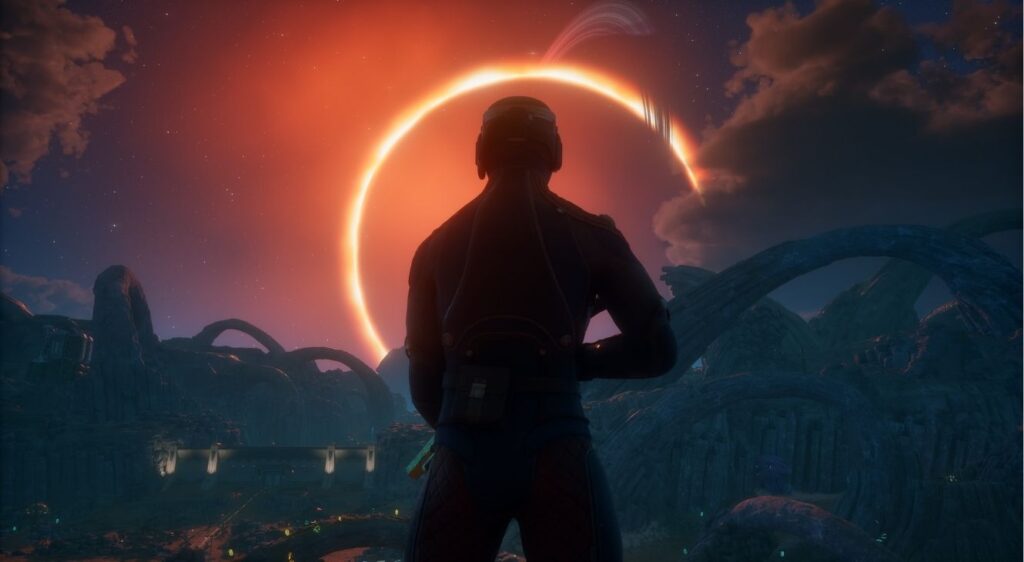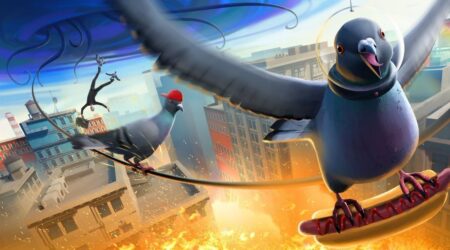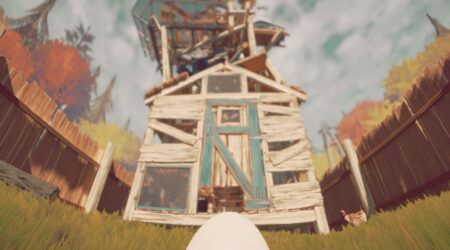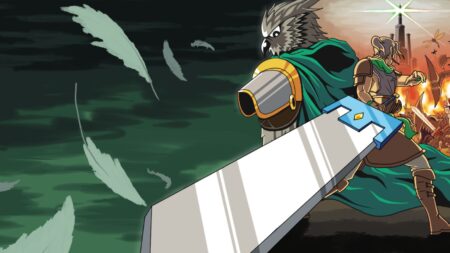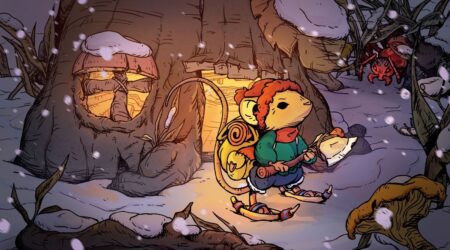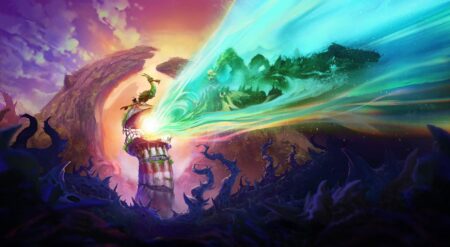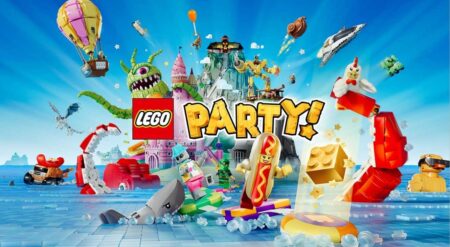The Outer Worlds 2, the first-person action-RPG published by Xbox Game Studios and developed by Obsidian Entertainment, puts players in the role of an Earth Directorate agent. Their mission is to travel to the Arcadia System, investigate the local government known as The Protectorate, and gather intel about their vaunted skip drive technology. However, very quickly, things go awry.
When The Outer Worlds debuted back in 2019, it brought a tongue-in-cheek sense of humor to a dystopian future set in space. With corporate greed running amok, the game challenged players to do their best to save the colony from greedy execs whose only concern was the bottom line. Along the way, it delivered humor, fun combat, and a captivating cast that won fans over. With expectations high, The Outer Worlds 2 has a lot to live up to. Thankfully, the folks at Obsidian Entertainment have delivered another superlative game.
At the core of the original game was its pervasive exploration of capitalism. Spacer’s Choice, Auntie Cleo’s, and more emphasized how terrifying the economic model is if there is no one around to regulate it. But while this exploration served the first game wonderfully, to bring spice to the sequel, something new needed to be introduced. Hence, The Protectorate.
The Protectorate is an unrelenting political entity that requires nothing of its subjects but unthinking obedience. Questioning authorities can bring Abiters, who wield the powers of judge, jury, and executioner, down upon anyone. Many subjects are even subjected to a process known as Mental Refreshment, where their impure thoughts and questions are scrubbed from their brains. All the while, they claim to be the perfect society as they follow The Plan.
In The Outer Worlds 2, The Protectorate offers new opportunities for exploration in storytelling.
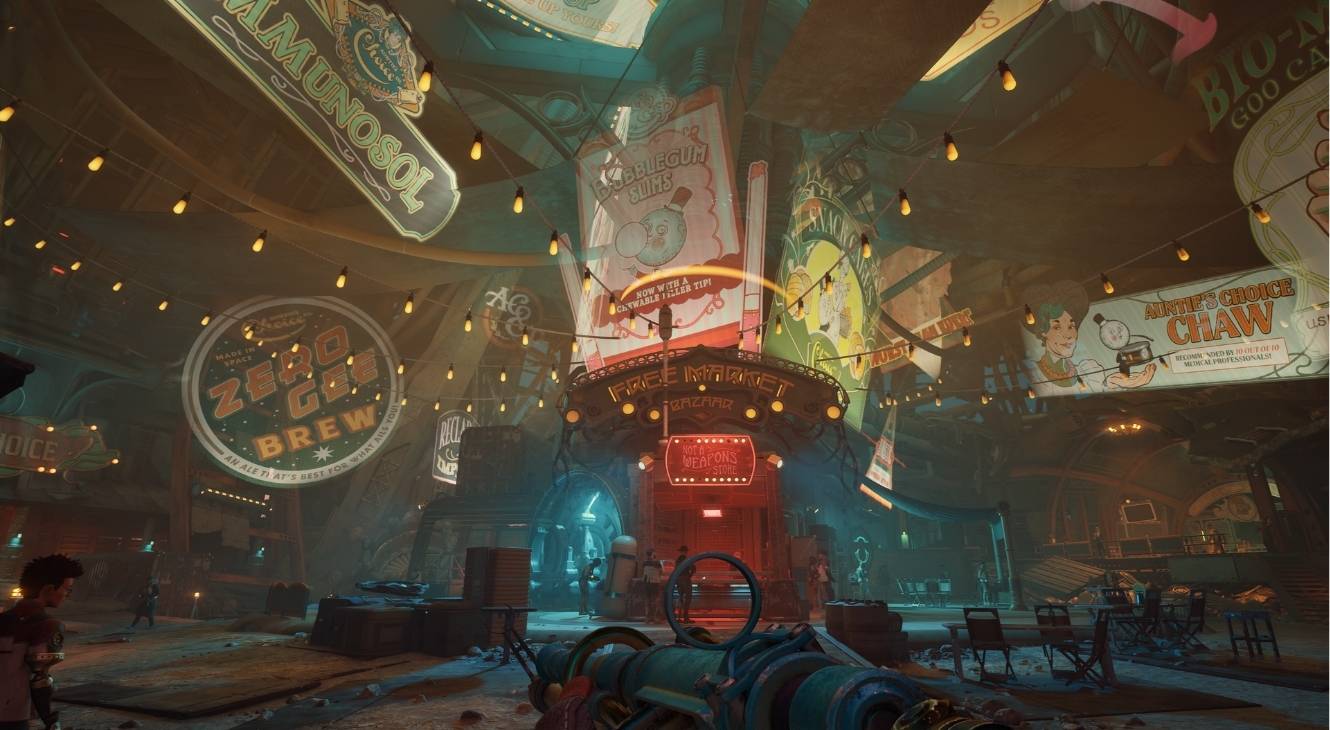
Introducing political extremism feels like a natural fit into The Outer World 2‘s themes and tone. The unwavering loyalty the organization demands and the effect of curtailing all inclination to ask questions creates, leaves plenty of opportunities for Obsidian’s writers to deliver much the same energy as the first game. The new element simply gives them new ground to work with.
But even as the new elements of The Outer Worlds 2 get plenty of exploration, the series continues to dive into its corporate world as well. Auntie’s Choice, the mega-merger between Spacer’s Choice and Auntie Cleo’s, has a central part to play too. Wielding slogans like “It’s not just Spacer’s Choice, it’s the only choice,” their claims of being a beacon for free enterprise ring utterly hollow. As the two parties clash, the player must often make the best of desperate situations.
These moments of less-than-ideal outcomes deliver some of the best moments in The Outer Worlds 2. Rather than have individuals or groups manage to leap from their starting situations to what we would call good, the game forces players to accept progress towards good, no matter how stunted it may feel. Watching striking workers celebrate concessions that create working conditions we’d scoff at hits hard, as it reminds us that much of what’s good or bad depends on your point of view.
All of this compromise and struggle blends perfectly into The Outer Worlds 2‘s core narrative. As science, corporate greed, and political extremism clash, the whole of Arcadia finds itself in jeopardy. As the player navigates the intrigues and options presented to them, they ultimately have a lot of say in how the story plays out. To get the ending one wants, the game requires you to put in the time.
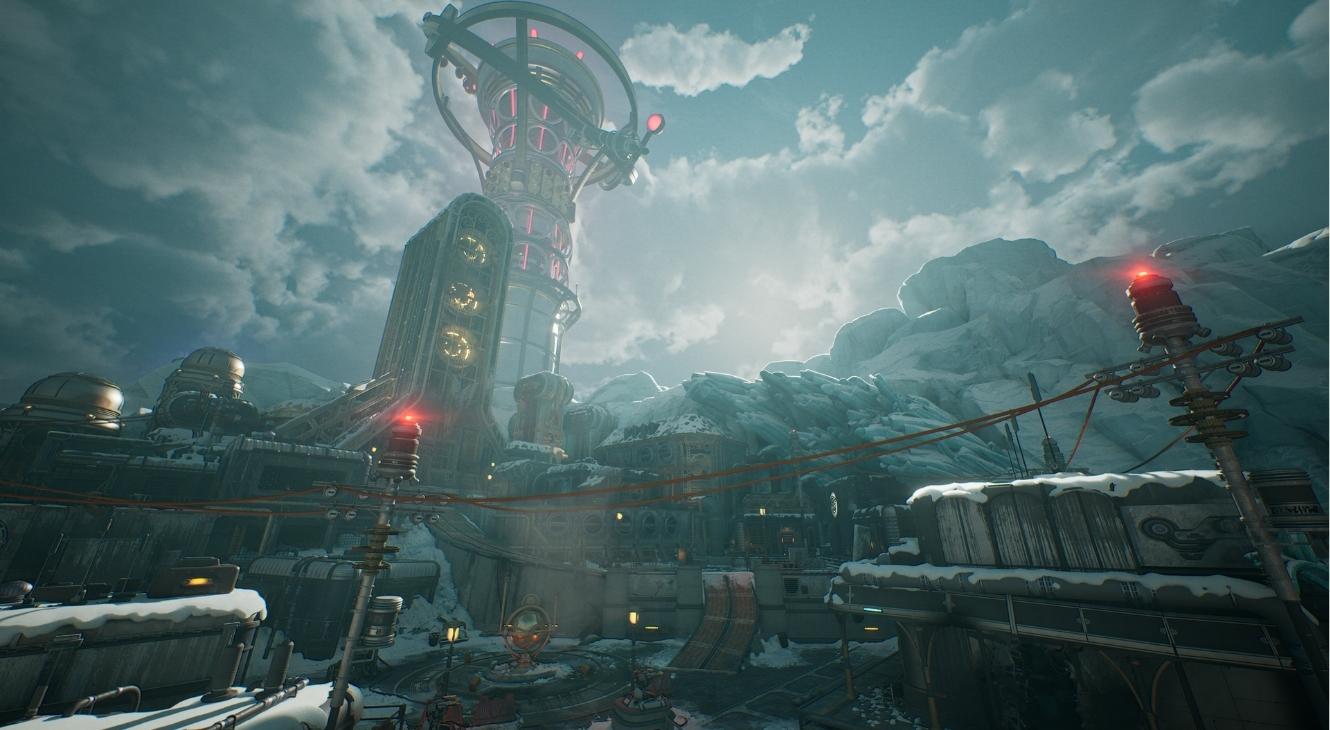
Narrative choice is a big part of many games these days. Numerous games aim to craft journeys where every choice, from dialogue options to skills learned and companions brought on a mission, impacts how everything plays out. Rarely have I felt the weight of these choices as much as I did here in The Outer Worlds 2.
Virtually every meaningful dialogue in the game contains options that trigger off of some choice the player has made. Many options are hidden based on whether the player has discovered something that informs their knowledge of a given situation, tying exploration into the narrative. Combined with stat requirements or perk unlocks, The Outer Worlds 2 delivers more reasons than most games of its genre to be as thorough as possible when exploring its world and story.
While the moment-to-moment narrative is always engaging, some of the bigger elements can get lost sometimes in The Outer Worlds 2. Specific faction goals, who’s fighting whom, and why can sometimes get clouded. This can leave confusion when choices need to be made. Happily, the broad strokes of the situation are clear enough that most will be able to know who to side with, even if some of the minutia is lost.
The only other disappointing element of the narrative comes in the ending. After the final choices are made, The Outer Worlds 2 walks through an epilogue montage of still frames, letting you know where your actions have left Arcadia.
Exploring the world and all of its possibilities crafts a dynamic narrative throughout.
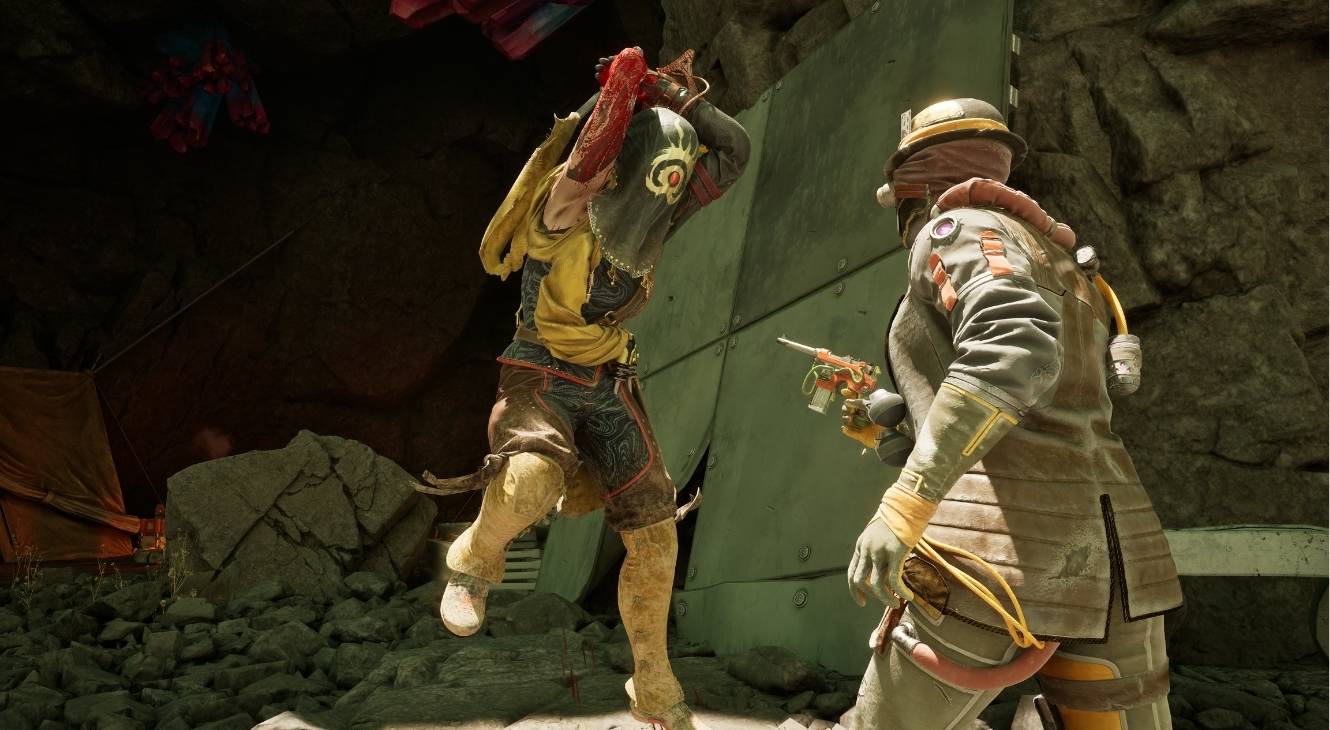
There were some notable omissions from the epilogue I got. An entire faction is never mentioned, while some characters get a surprising amount of light shone on them. This left a minor sour note as the credits rolled. Despite the strong ending my character’s personal story delivered, the lack of a strong epilogue presentation couldn’t help but disappoint. What becomes of the wider world is a big part of the adventure.
Accompanying the player on their journey is the oddball cast of characters that players would expect. These characters, like the worlds and situations they come from, exhibit some extreme opinions when we first meet them. As the player deals with them, they can see a noticeable change come to their personalities and opinions. These changes feel fairly organic. Meeting all the potential party members is not guaranteed, further encouraging thorough exploration.
These companions give the player glimpses into the various factions and realities of Arcadia. They provide context for elements that are alien to us, helping to breathe extra life into the world. They are all flawed to one extent or another, and watching many of the issues explored via their companion quests makes them grow on you. One character I initially disliked greatly even managed to surprise me with their story. But in the end, I was impressed by how far the narrative had brought them.
The companion characters provide just as much depth with their gameplay as they do within the narrative. Each character provides different weapons and skills that can help shape the player’s strategy. As they level, upgrades can be unlocked, each offering a pair of choices for the player to pick from, further tweaking the ally to their playstyle. Fulfilling each character’s companion quest also unlocks a pair of companion mods that give even more bonuses.
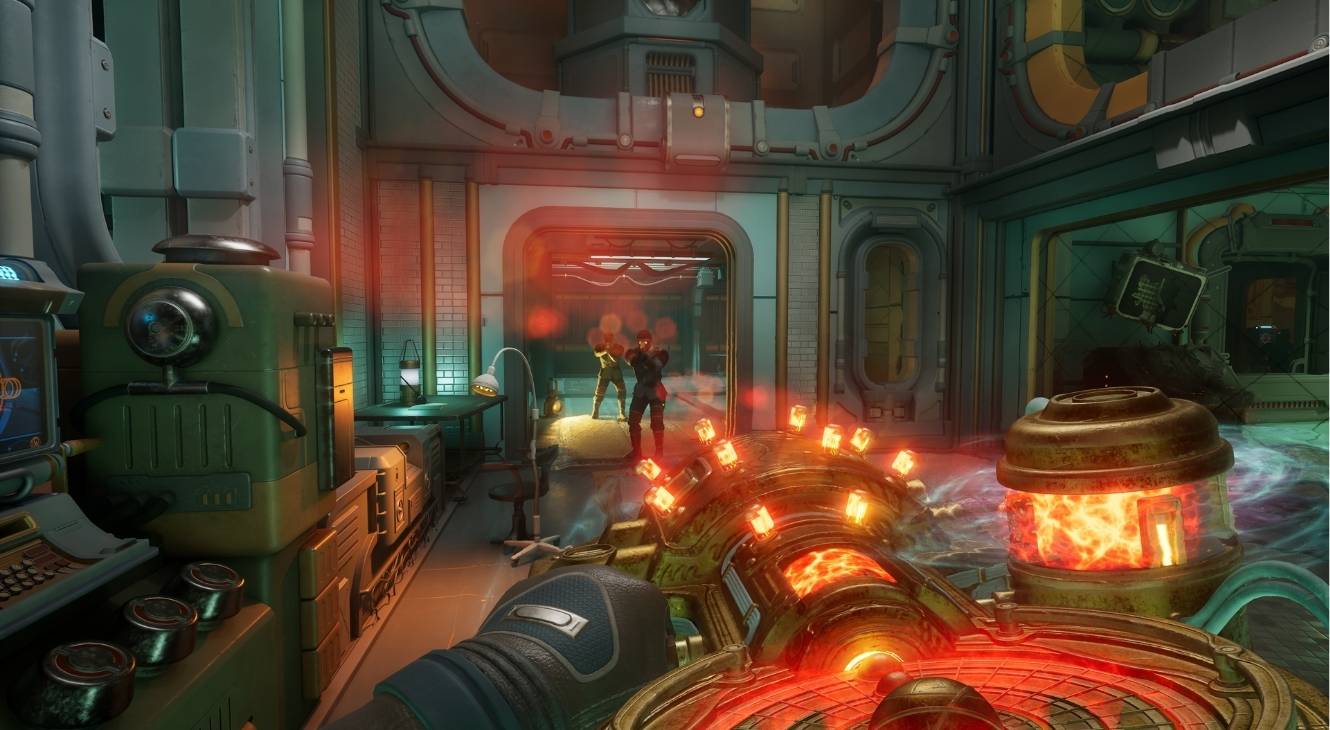
The overall gameplay experience in The Outer Worlds 2 is fantastic. A myriad array of weapons, enemies, and combat situations come together to craft lots of fun and sometimes challenging scenarios. From humans to mechs to Arcadia’s local fauna, lots of obstacles will stand in players’ ways, demanding they cultivate their own unique blend of social skills, sneak attacks, and brute force to reach their final objectives.
The controls in combat feel great, and firefights can quickly become hectic affairs, demanding adaptability and level-headedness. Companions’ AI tends to be solid during intense firefights. I rarely found my allies not making themselves useful. Only when engaged by long-range enemies like snipers did their programming fail them, often leaving them vulnerable to being picked off by foes when cover was readily available.
The level of ingenuity displayed in weapon design further adds flavor and variety to The Outer Worlds 2‘s combat encounters. Some weapons completely changed how I played, and demanded I hold onto them, even as others promised more raw power, but lacked a special upgrade that made a choice speak to me.
The crafting system further increases the variety of combat implementations. Players can purchase/find/build upgrades for the various styles of weapons and armor, giving them access to a multitude of options and toolkits. From increased magazine sizes to altering a weapon damage type and adding secondary functions, players can find an abundant number of methods for dispatching their adversaries.
From weapon design to crafting, there are a multitude of ways for players to enhance their gear.
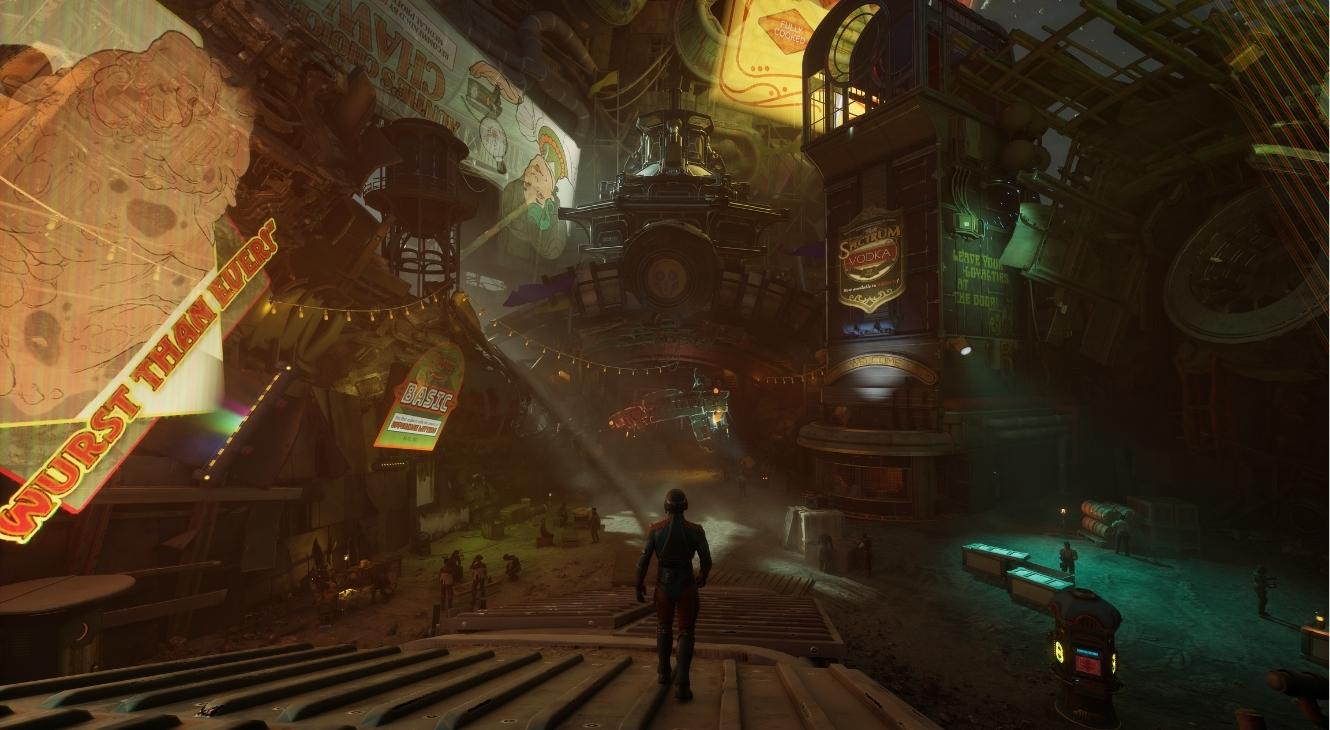
How a player levels their character can also greatly impact how combat plays out in The Outer Worlds 2. But rather than have concepts like melee or range damage linked to attributes, this game foregoes that style of leveling altogether, linking everything to skills and perks.
Every skill has a combat implication. While melee and range are the most critical to invest in for favorable encounters with hostile forces, they are far from the only deciding factors. Lockpicking increases a character’s evasion, while speech augments damage against human enemies. Thanks to how granular combat bonuses become, players can find particular encounters shift in difficulty depending on their chosen build.
Perks also greatly impact The Outer Worlds 2. Locked behind skill ranks or background choices at the game’s start, these options can bring lots of flavor to the character both in and out of combat. Every perk seems useful, and many instantly grab the imagination, creating a treasure trove of possibilities.
And now we come to the most improved element from The Outer Worlds 2‘s predecessor – flaws. In the original, flaws fell flat due to their largely unintertsing effects and conditions. In this game, Obsidian Entertainment expanded the scope of what these character influences can do.
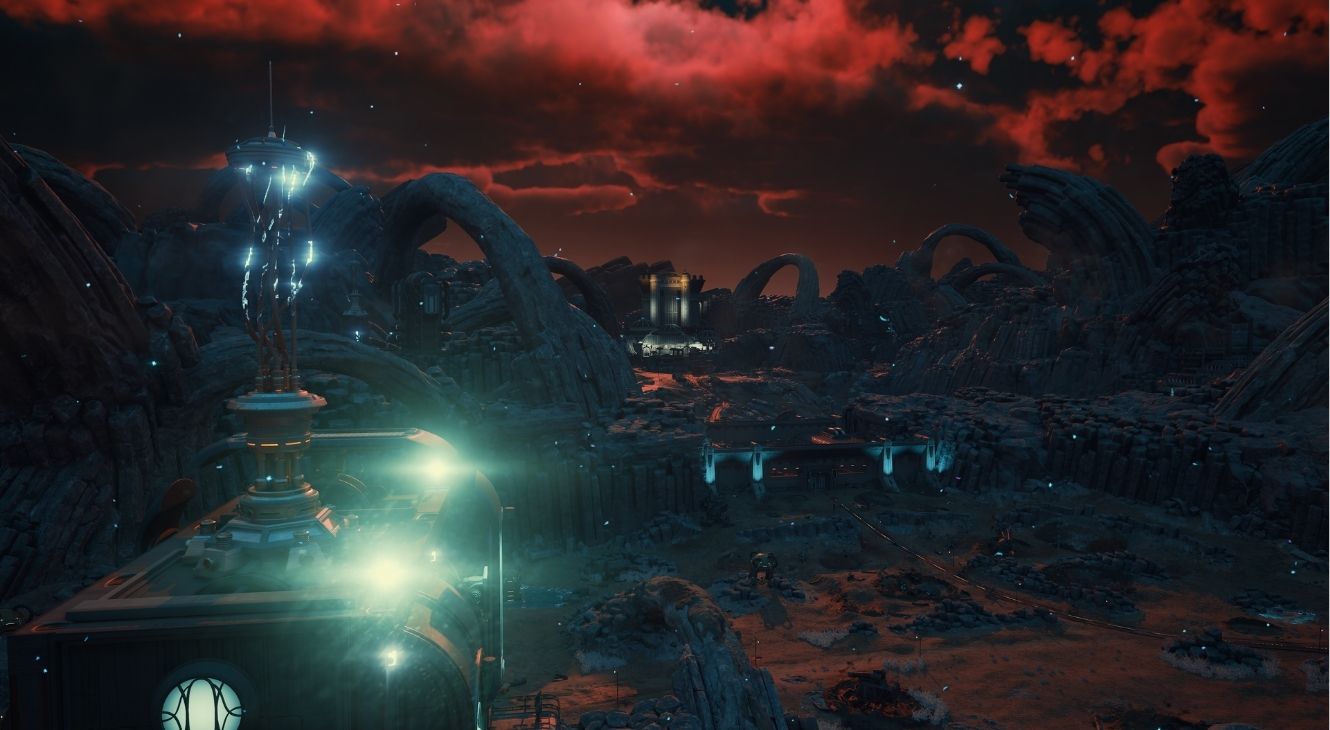
Now they provide all manner of creative wrinkles to characters. While some solely present challenges, others provide alluring bonuses coupled with a drawback. If the drawback doesn’t outweigh the advantage, grabbing some of these makes total sense. While I never felt compelled to accept any of them in the original, I had accrued roughly half a dozen in this game. Some of these options not only enhanced but also heavily shaped my game experience.
Providing all the characters, narrative, and systems with a place to exist creates the visually engaging world of Arcadia. The retro-future look of the first game has been brought forward to The Outer Worlds 2, creating a familiar visual language to welcome players.
However, beyond this recurring visual theme lies a lot of variety in scope, environment, and personality. Each new area that players visit presents something different from the others. This allows for a refreshing visual welcome with each new stop on the journey.
The Outer Worlds 2 is the sequel we never thought we needed, and it just works.
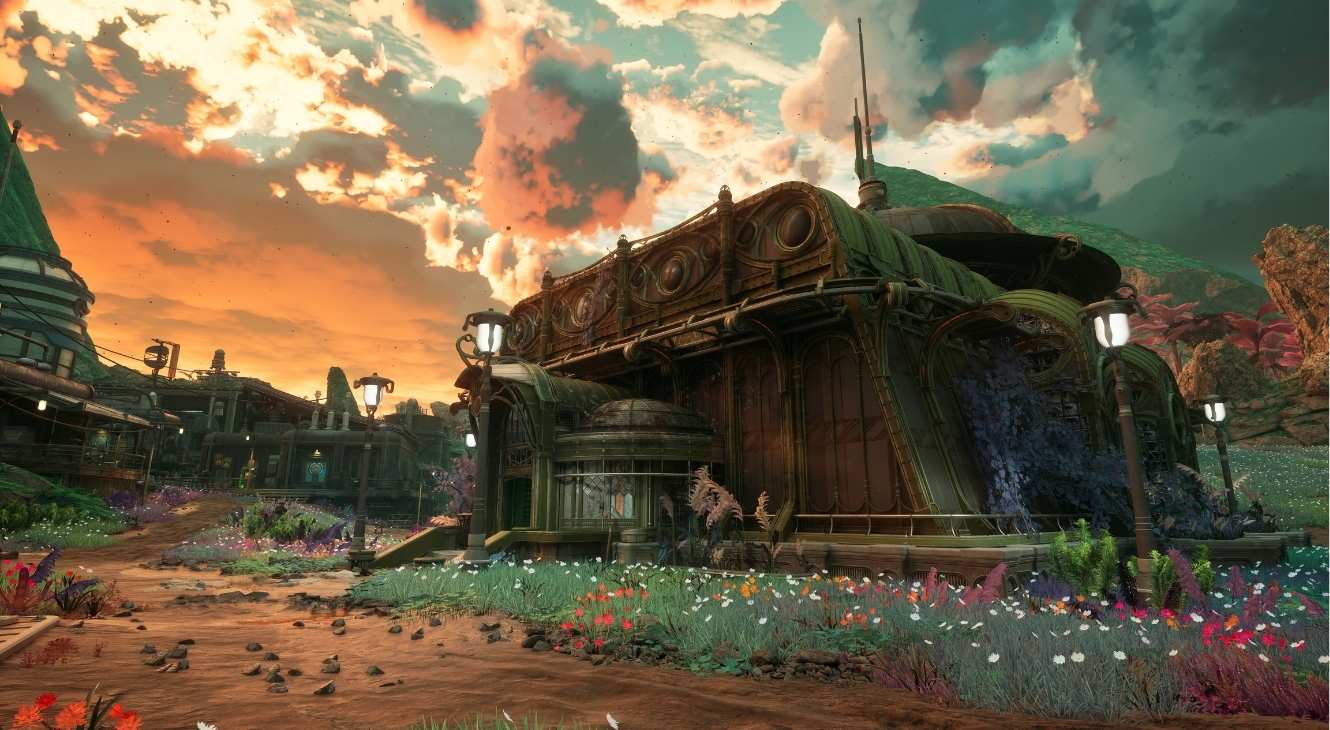
Making the worlds and regions of The Outer Worlds 2 even more striking is the often varied, but always vibrant, color palettes employed. Some regions are absolutely brimming with color, giving them an exceptionally wild feeling. And when players are tasked with visiting more traditionally drab locales like space stations, even these find some measure of energy thanks to strong lighting choices that break up the steel greys of bulkheads and passageways. I don’t know who decided all crawlspaces should be lit purple, but they are a genius.
The Outer Worlds 2 comes together to deliver a fantastic journey. Despite some narrative hiccups, the worlds, organizations, and individual players encountered, and sometimes killed, are always engaging and frequently fun. The multitude of customization options and discoverable elements all but guarantee no two players will leave Arcadia with the same set of experiences.
The Outer Worlds 2 is available now on Xbox Series X/S, PC, and PlayStation 5.
The Outer Worlds 2
-
Rating - 9/109/10
TL;DR
With expectations high, The Outer Worlds 2 has a lot to live up to. Thankfully, the folks at Obsidian Entertainment have delivered another superlative game.

